Unboxing and First Impressions
The Zillion Direct arrives in a sturdy cardboard box with reinforced corners made from extra-thick cardboard. Inside, the case is cushioned with classic foam padding, and the chassis was in immaculate condition upon unboxing. Super Flower includes a surprisingly generous accessory package, divided into two containers: one made of cardboard and the other of plastic, both secured inside the case.
The plastic box contains a variety of essentials: mounting screws, a replacement panel, spare plastic clips, and a handful of zip ties. While functional, we would have preferred the inclusion of reusable Velcro straps instead, as they offer cleaner and more versatile cable management. The cardboard box includes a fan controller, a strip of double-sided tape for mounting, a remote control, a PWM extension cable, and three sets of fan screws. Admittedly, the tape isn’t the most elegant mounting solution, but having one included is always appreciated.
Visually, the Zillion Direct is understated and minimalistic when not powered on. Its serious look, primarily defined by mesh surfaces, emphasizes practicality over flash.
Design and Build Quality
Constructed primarily from steel, the chassis also incorporates plastic and rubber elements in various ways. All panels feel solid and exhibit no noticeable flex, indicating excellent build quality. The case’s design language is consistent throughout, with a heavy focus on airflow thanks to the perforated mesh style covering nearly every surface.
The front panel is composed of two separate parts: an outer structural frame and an inner mesh fan cover that attaches magnetically. The inner section can be removed without tools for easy cleaning, while the outer frame detaches using a cutout located at the bottom.
The top panel is similarly designed for airflow. It’s held in place by plastic clips (replacements for which are included in the box) and can be removed via a notch at the rear. There’s no dust filter beneath it, which means fewer obstructions for exhaust air. The panel itself feels sturdy and is easy to handle.
Both side panels share a perforated design that complements the airflow-focused theme. Surprisingly, there’s no tempered glass here, a rare decision in this form factor, as performance takes priority over aesthetics. Although the panels appear symmetrical, the perforated areas differ on each side, rendering them non-interchangeable. They’re also toolless, with subtle indentations showing where to press for removal.
At the rear, the mesh pattern continues, albeit with a more open design to facilitate exhaust. There are seven expansion slots and a removable PSU tray secured by two thumbscrews. The PSU tray protrudes slightly from the case, disrupting the otherwise clean silhouette. While this doesn’t impact functionality, it’s hard to ignore once noticed.
The wrap-around mesh, flowing from one side panel, over the top, and down the other side, reminds us of the ASUS AP201, albeit rotated 90 degrees. This design is both functional and stylish, underlining the airflow-first philosophy of the case. The top-mounted I/O panel is elegantly framed by the top panel, featuring a mirrored design that, although not functionally symmetrical, displays a level of attention to detail rarely seen in this price segment.
Underneath, the bottom panel features a removable dust filter, which unfortunately can only be accessed from the side, limiting ease of cleaning. The top panel also features integrated mesh and attaches to the chassis using a toolless mechanism.
Compatibility and Space Utilization
Despite its mid-tower classification, the Zillion Direct offers generous internal clearance. It supports motherboards up to the E-ATX form factor, CPU coolers up to 184 mm in height, and GPUs as long as 394 mm. The PSU chamber officially supports units up to 215 mm in length, ensuring compatibility with most modern power supplies. Notably, the chassis doesn’t support BTF (Back-to-Front) motherboards.
Internally, the case is impressively complex, featuring modular panels, brackets, and advanced cooling capabilities. Along the side of the motherboard tray, a removable panel conceals cable pass-throughs and includes a metal cover to keep the wiring out of sight. Removing the cover also provides space to install additional standoffs for wider E-ATX motherboards. Above the PSU enclosure, the top panel is fully perforated and extends from front to back. The front third swings downward and features a plastic clip-on deflector meant to guide intake air toward critical components such as the GPU and CPU.
Mounted on top of the PSU shroud is the accessory area we encountered during unboxing. Right beside it is the GPU anti-sag mechanism, which looks more complex than it is. The bracket attaches with two screws and slides forward or backward along four base slots. Additional screws allow for height adjustment, and a modular end piece can be used for vertically mounted GPUs, though you’ll need to supply your vertical mounting kit.
A rubber grommet provides a clean pass-through for PCIe cables, while a hinged deflector panel helps direct airflow from the front fans to the GPU and CPU zones. It’s secured with a single screw from the rear and covered with a plastic guide to maintain directional flow.
On the rear side of the case, another steel panel covers up cable clutter, mounted directly behind the removable cable routing panel. If you plan to use this space for extra airflow or fans, you’ll need to remove both covers. This second panel is somewhat limited in utility, as securing cables behind it requires force and doesn’t result in a particularly clean outcome.
Cooling and Airflow
Cooling is a design priority for the Zillion Direct. The chassis includes four pre-installed fans, three at the front for intake and one at the rear for exhaust. The front fans are mounted on a removable tray, making them easy to clean or replace. There’s also room for additional fans or a 240 mm radiator mounted behind the motherboard tray. You can learn about the fans’ performance here.
The removable top fan and radiator bracket significantly simplify installation, offering easy access and hassle-free mounting.
The airflow performance benefits heavily from the case’s mesh-dominant construction and generous spacing. Air can move freely across the system, and design elements, such as the flip-down air deflector, help guide airflow toward thermally demanding areas, including the GPU and CPU. Super Flower even made retail revisions to better support thicker radiators, which shows a commendable level of post-launch refinement.
Storage Options
Instead of using the front PSU shroud for hard drives, a standard solution in many cases, Super Flower opted to use that space for airflow deflection. To compensate for the lost storage real estate, all drive mounts are relocated to the back of the motherboard tray. This unconventional approach works surprisingly well.
There is a removable steel plate that holds up to two 2.5-inch drives. Additionally, two individual trays are included, each capable of housing a 3.5-inch hard drive. This setup maintains competitive storage capacity without sacrificing the airflow benefits of a cleaner front panel or the inclusion of the air ramp.
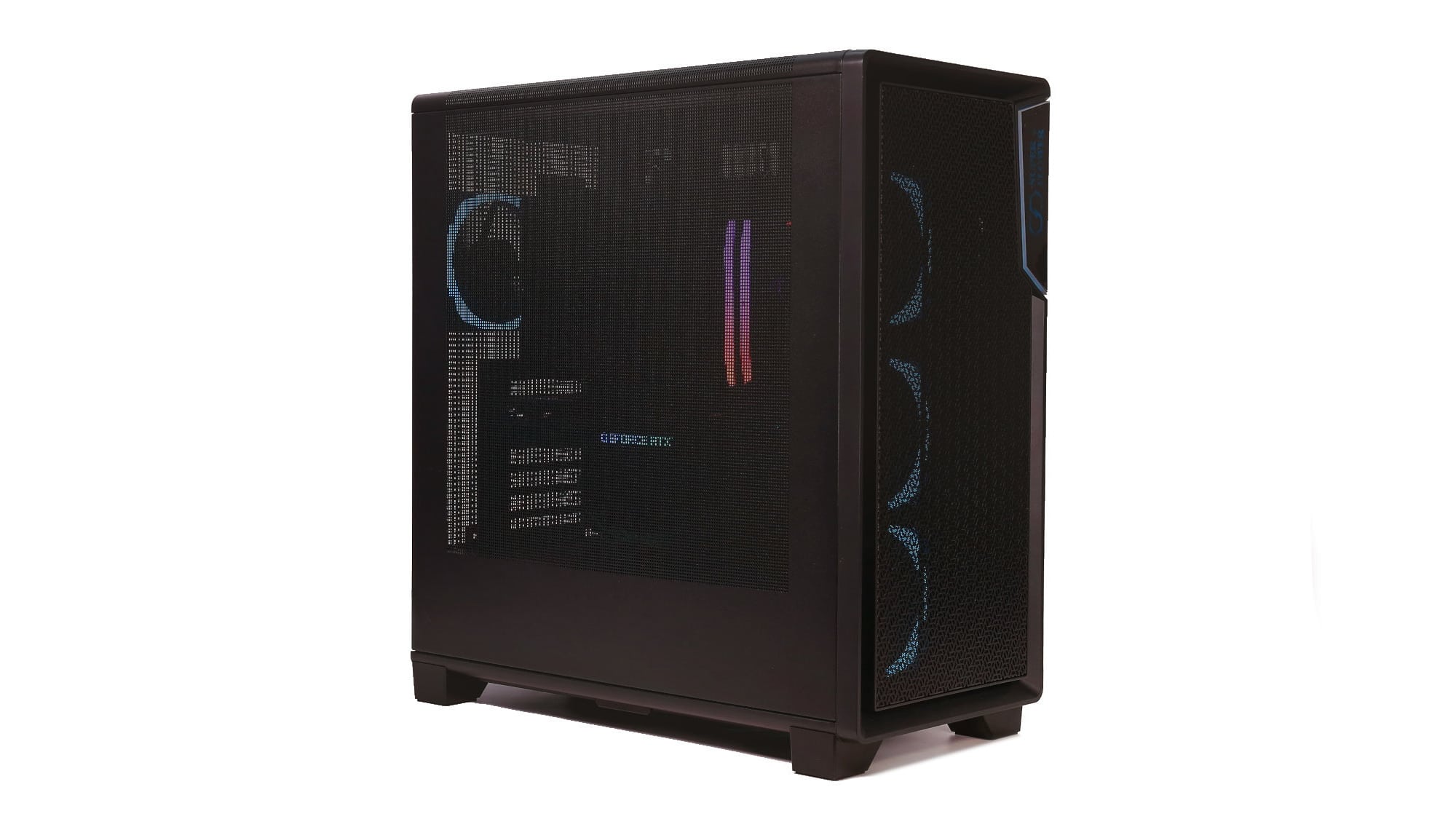
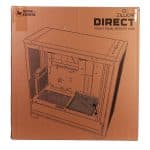
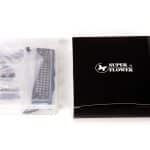
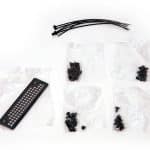
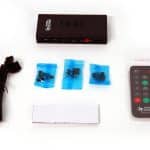
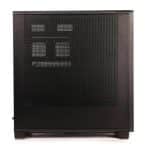
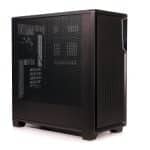
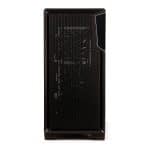
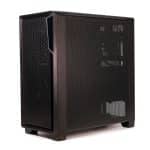
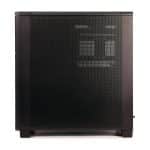
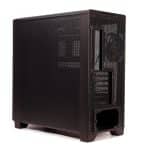
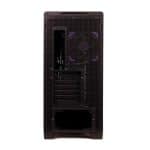
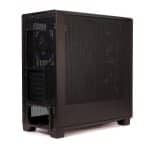

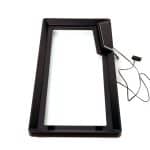
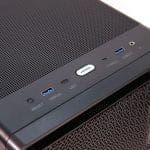
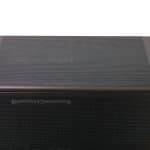
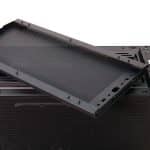
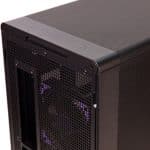

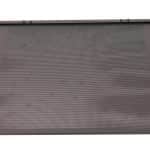
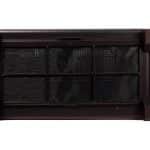
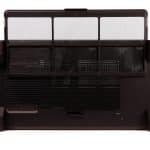
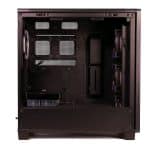
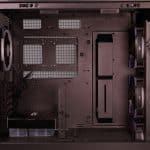
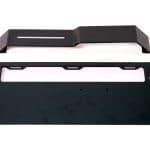
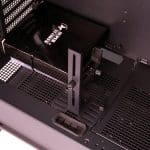
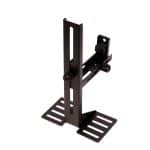

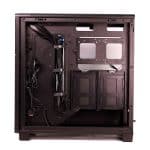
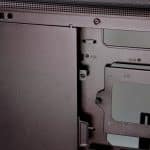
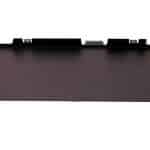

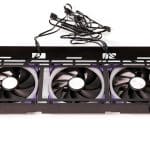
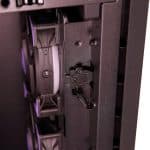
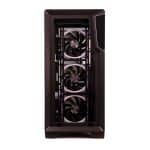


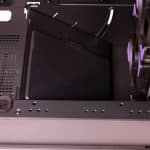
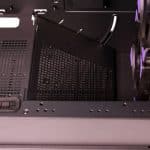
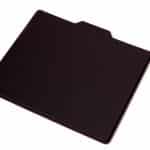
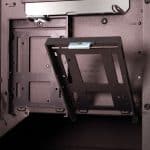
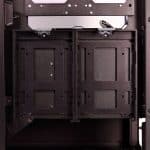
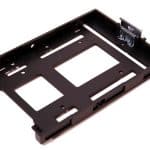

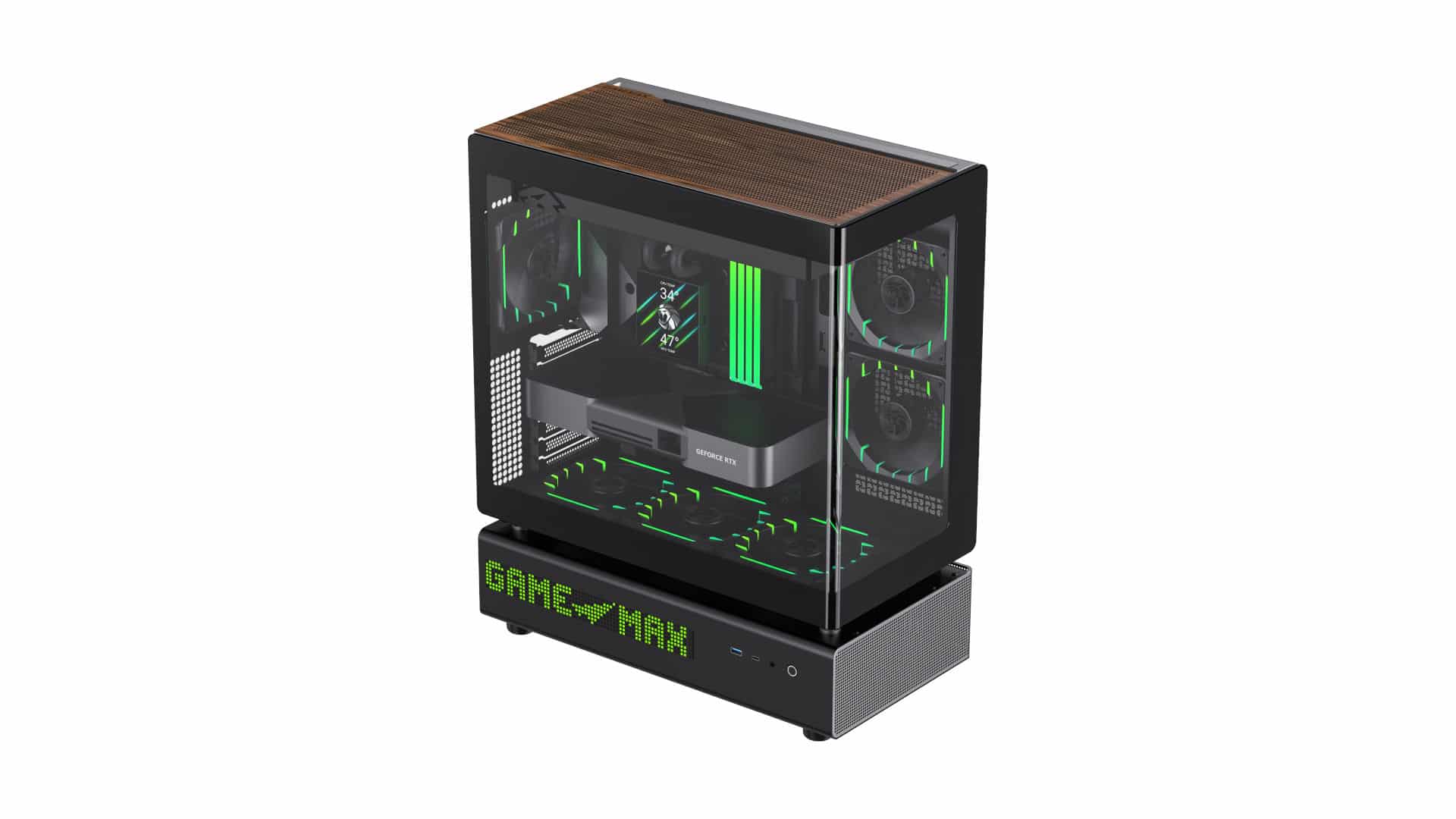
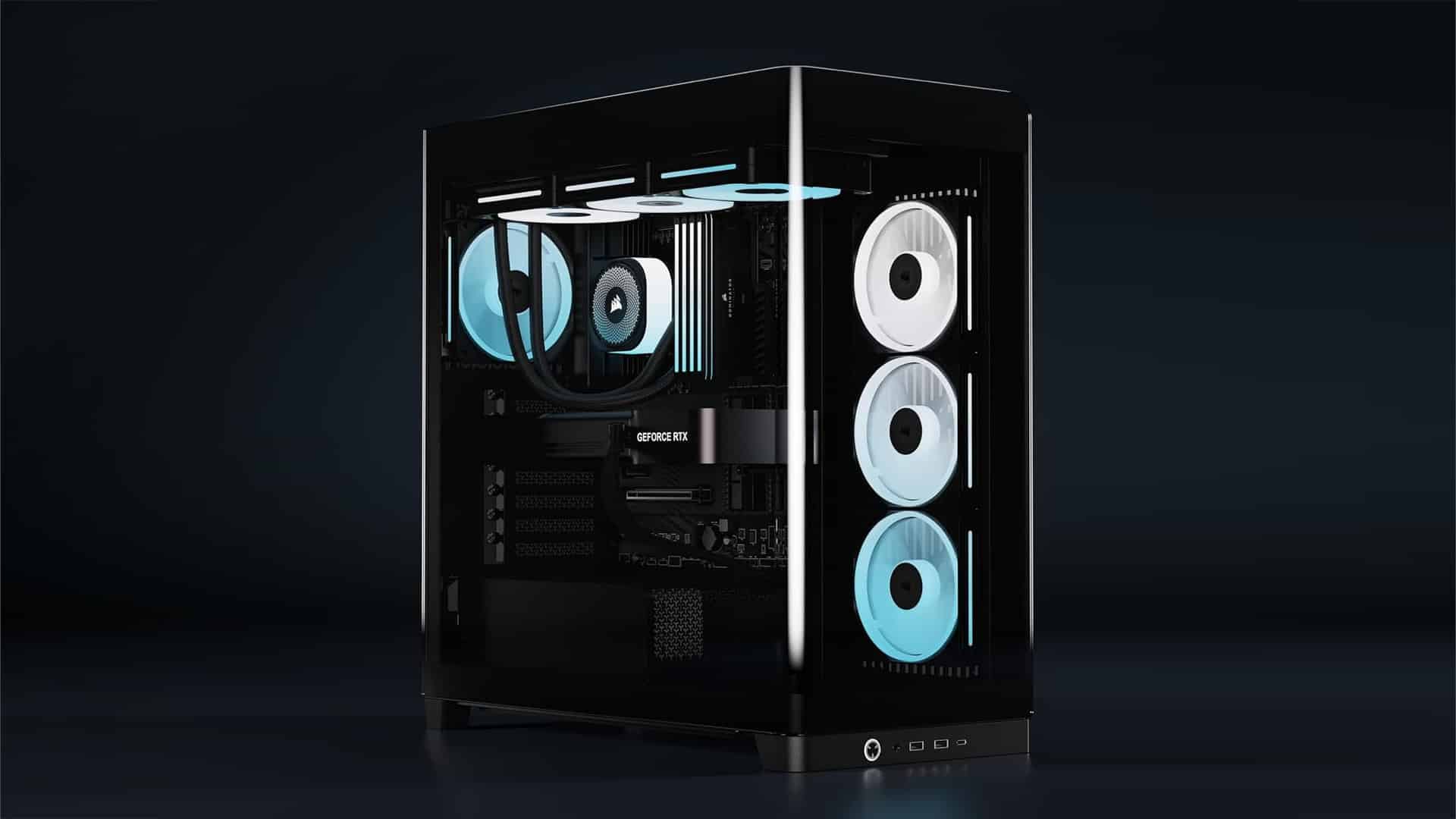
This is actually a cool case. The mesh side panel is a good compromise on displaying your parts and airflow. Too bad Superflower does not have a wide presence in my country and as such their cases and power supplies are rarely available.
Since the start of this year, you have been focusing primarily on the sound characteristics of PC cases. Although, this case is the worst in the noise damping and even “outperform” XPG Invader X Mini :o, has no mention about this finding in the negatives. This result looks like the case is a high frequency amplifier (from 5 to 9 kHz) …so someone who has a problem with coil whine should avoid it. Don’t you think? 😉
…
note: Links to chapters 3 and 4 are mixed up 😉
thank you! We will check them.
Thank you for taking the time to read our review! We’ve taken your feedback into account and have updated the article to include a note about the case’s noise-damping performance.
While perforated side panels generally offer inferior noise damping compared to glass panels, it’s also worth highlighting the surprisingly good acoustic performance of the stock fans, something we don’t see very often.
👍
–“…While perforated side panels generally offer inferior noise damping compared to glass panels…”
Yes, I know 😉 … though, the benefit of a mesh side panel for temperatures and airflow pattern can be negligible to undetectable 😉
Maybe, even counterproductive in high-pressure scenarios…what can’t be said about the sound 🙂
https://youtu.be/aQHKCjuYTVQ?t=1083
https://youtu.be/Aor-3v6N7i8?t=1190
…not even talking about dust maintenance 😀